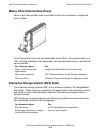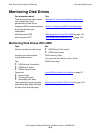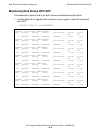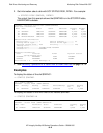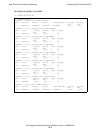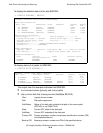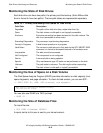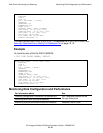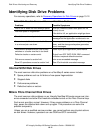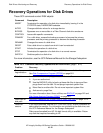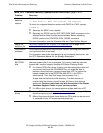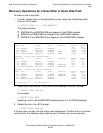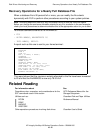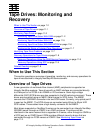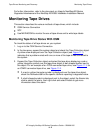
Disk Drives: Monitoring and Recovery
HP Integrity NonStop NS-Series Operations Guide—529869-005
10-11
Identifying Disk Drive Problems
Identifying Disk Drive Problems
For recovery operations, refer to Recovery Operations for Disk Drives on page 10-12.
Internal SCSI Disk Drives
The most common disk drive problems on a NonStop S-series server include:
•
Space problems such as full disks or free-space fragmentation
•
Stopped disks
•
Performance problems
•
Defective tracks or sectors
M8xxx Fibre Channel Disk Drives
The most common disk problems on an Integrity NonStop NS-series server are intm-
errors-exceeded and slow-IOs-threshold-exceeded errors on the Fibre Channel loop.
Such errors are often normal. However, if they cause problems on a Fibre Channel
loop, power the affected disk down and up again. This procedure can solve the
problem temporarily.
Unless you are a qualified service provider, you cannot perform any physical actions
on disk drives. However, operators can use OSM and SCF commands.
Table 10-2. Possible Causes of Common Disk Drive Problems
Problems Possible Symptoms
Disk is full or does not have enough space. Error 43 (unable to obtain disk space for file
extent) occurs.
If the disk is full, an application might go down.
Disk free space is fragmented.
One disk in a mirrored pair is down. The storage subsystem generates an event
message but the application continues to run.
An unmirrored disk is down, or both disks
in a mirrored pair are down.
Users report access problems, applications go
down, and the storage subsystem generates
event messages.
Performance problems occur due to path
switches or a cache size that is too small.
Users report poor application performance.
Defective tracks or sectors exist. Output from SCF INFO DISK, BAD command
indicates unspared defective sectors.
Disk errors exceed a certain limit. Intm-errors-exceeded message
Slow I/O operations exceed a certain limit. Slow-IOs-threshold-exceeded message



